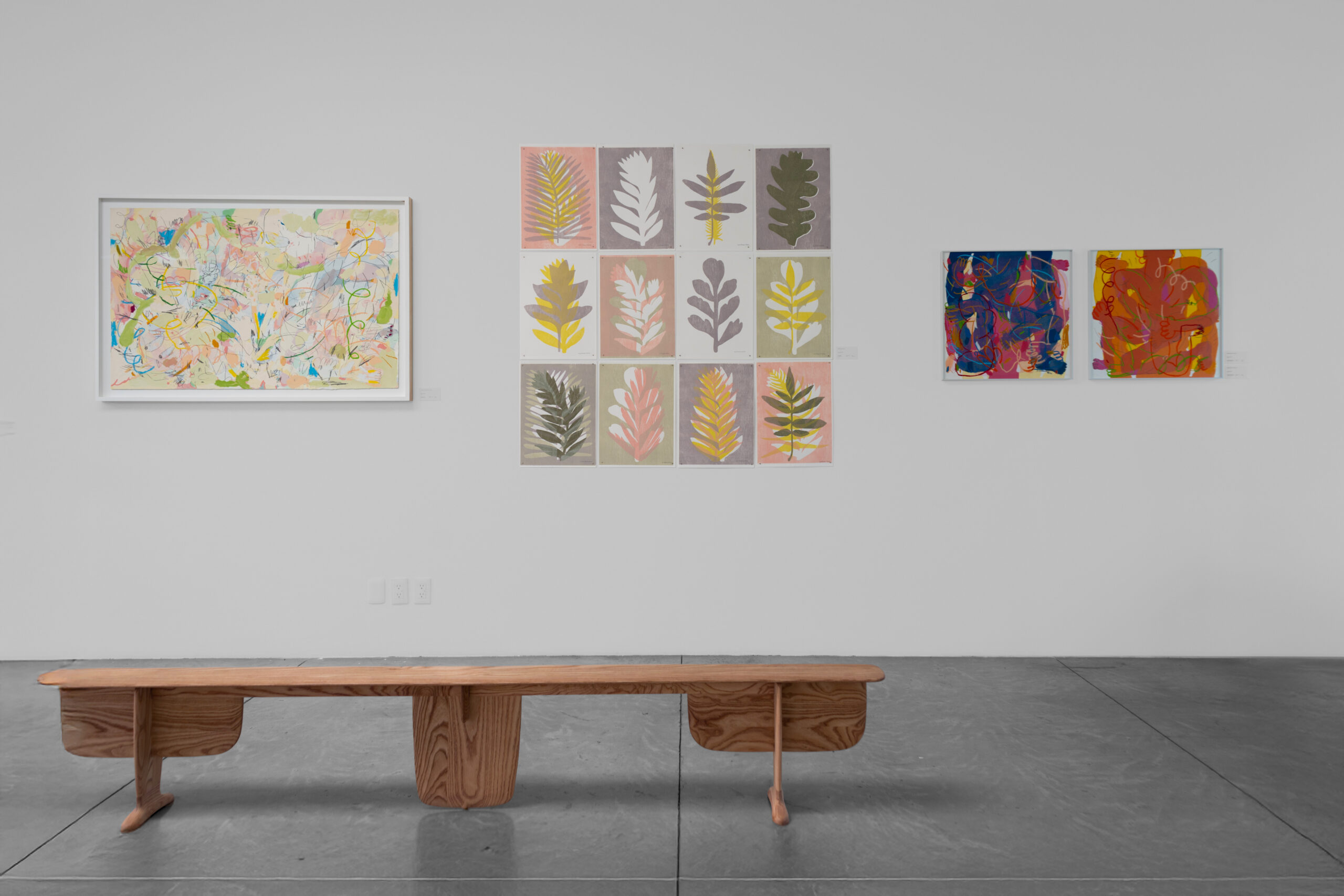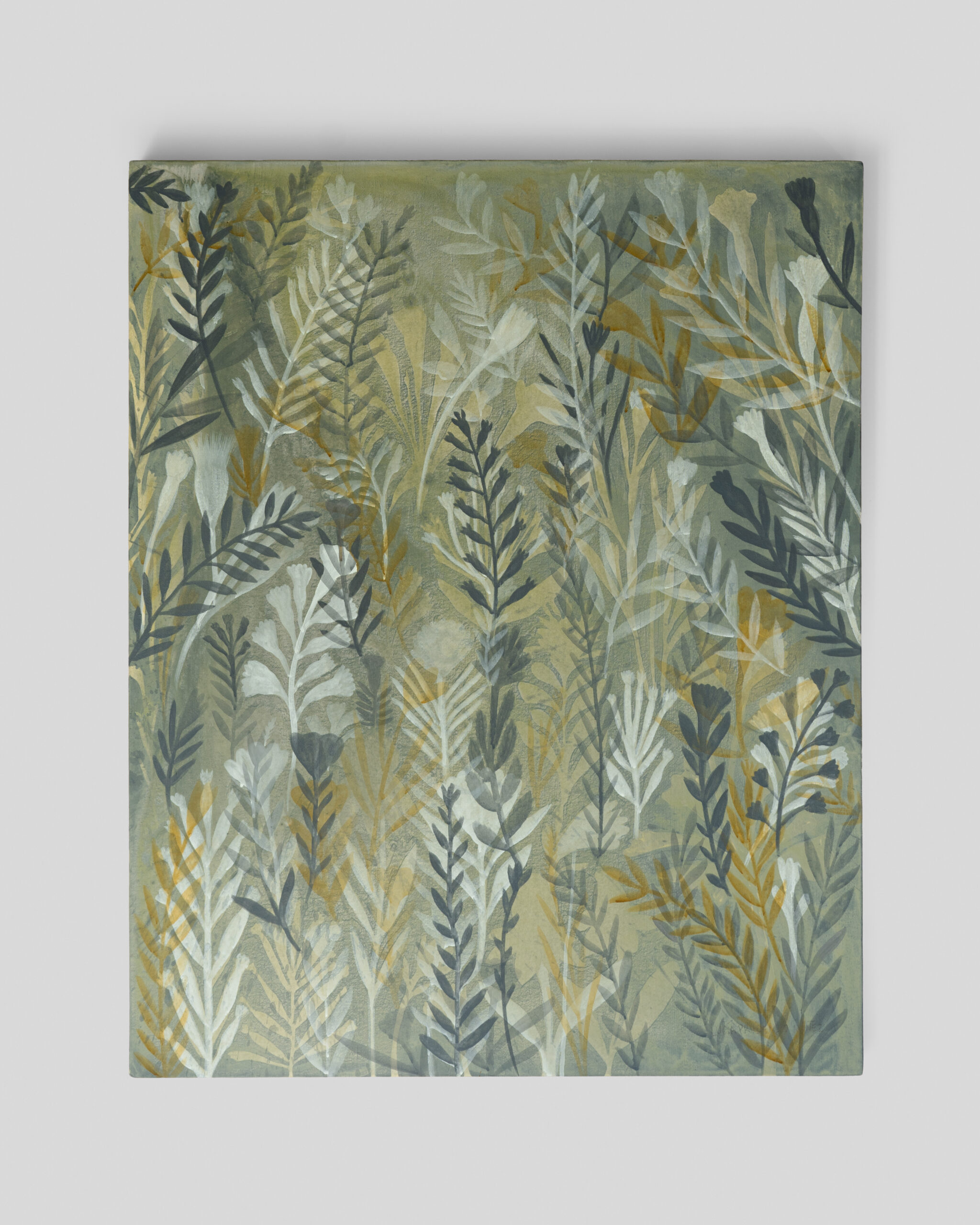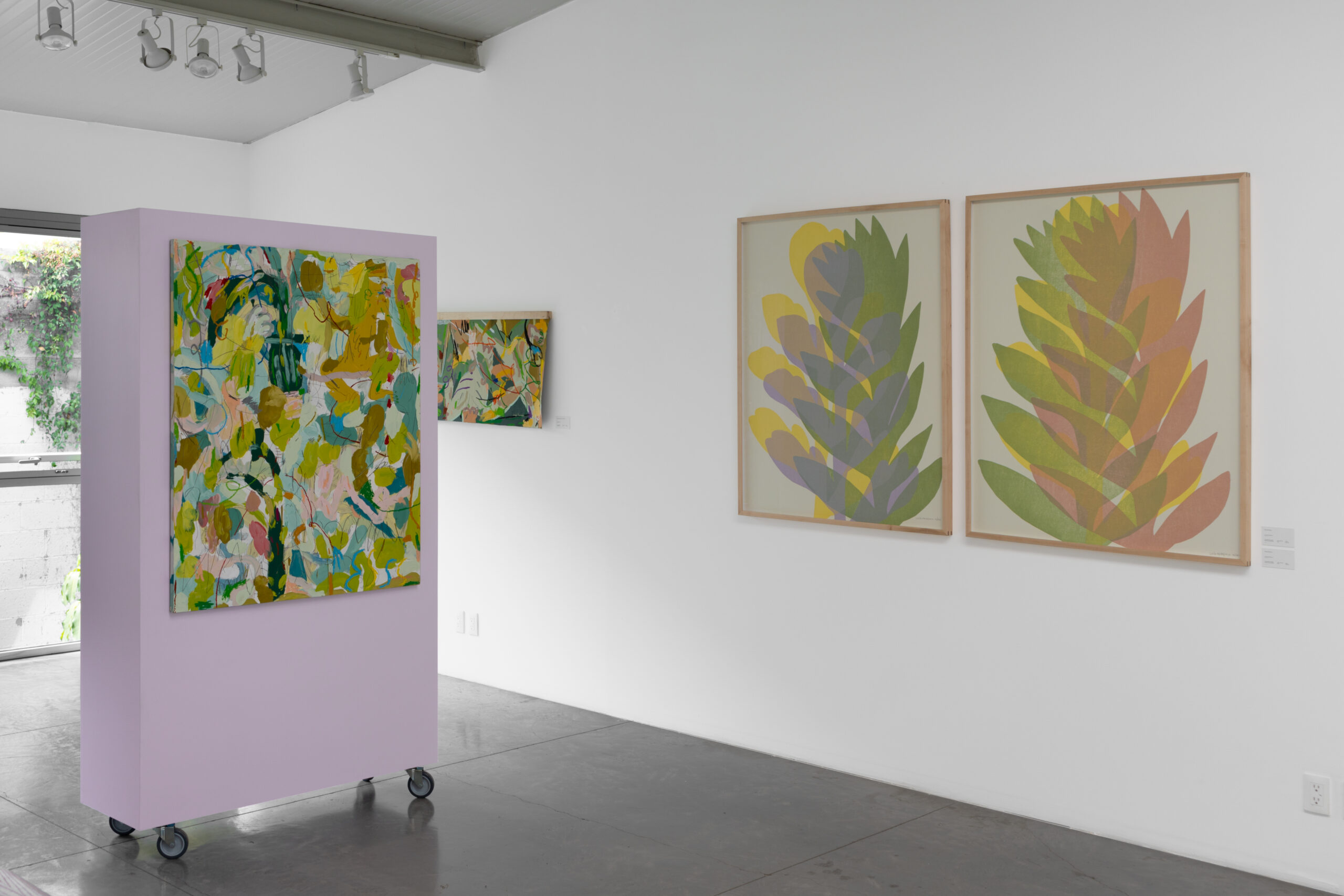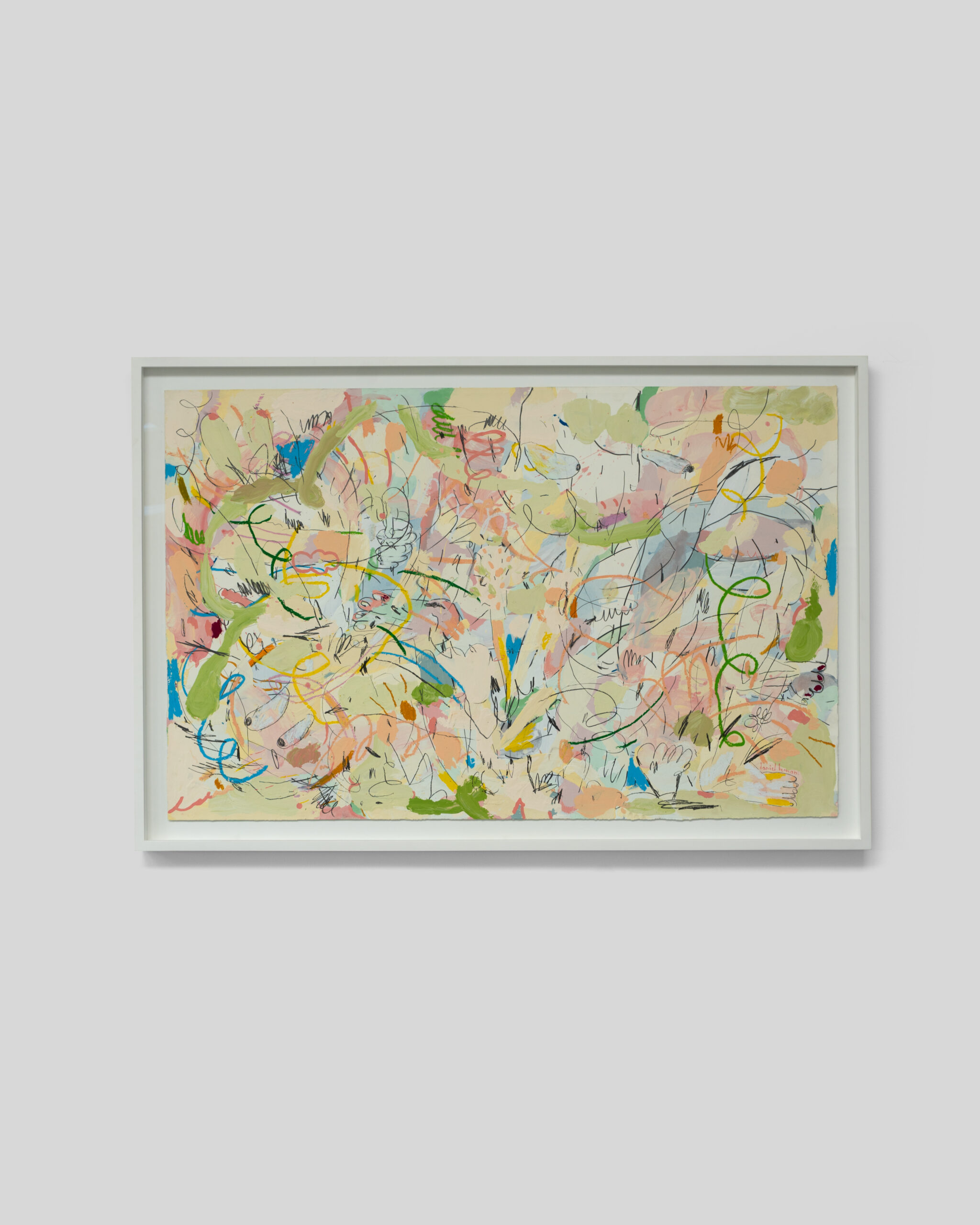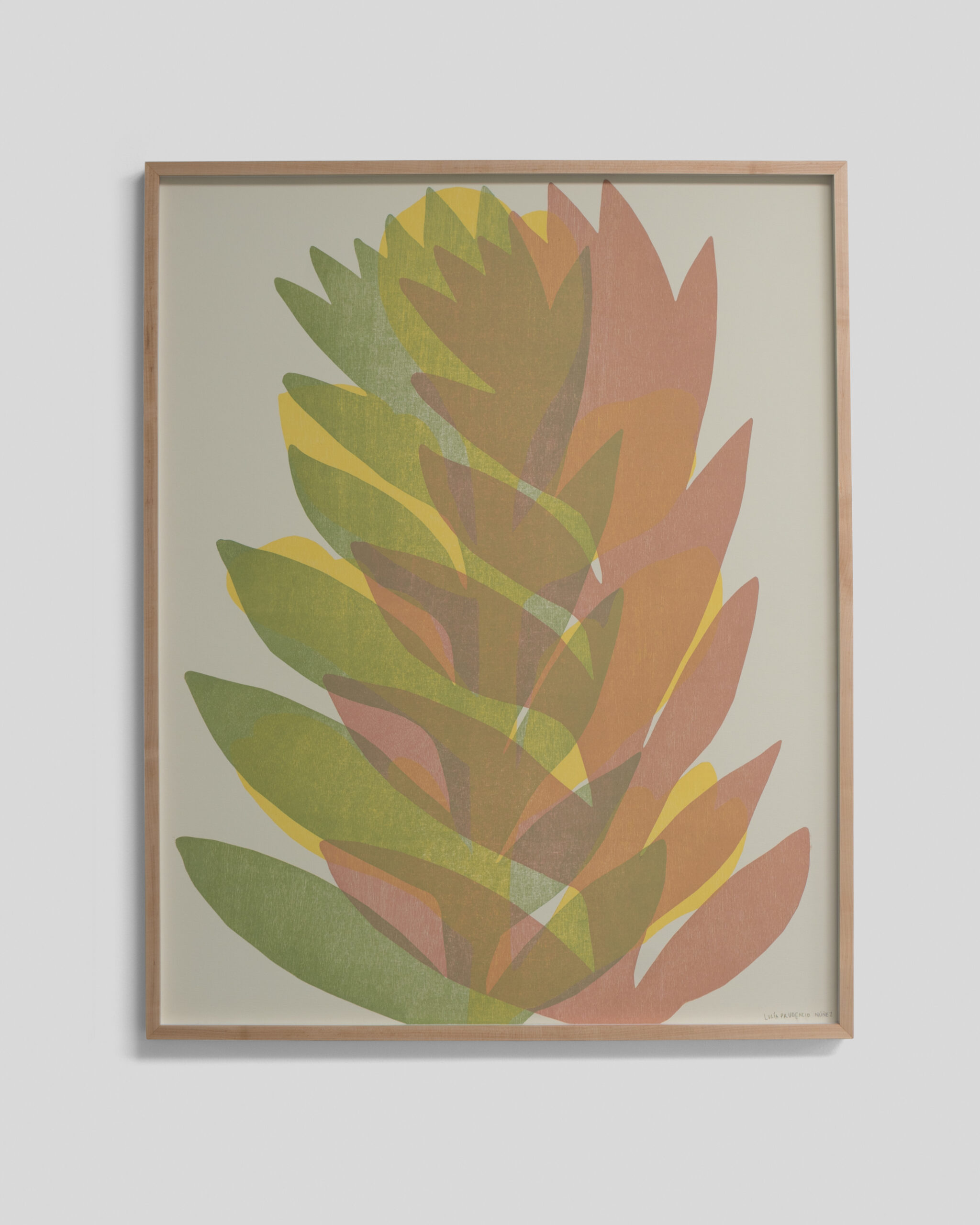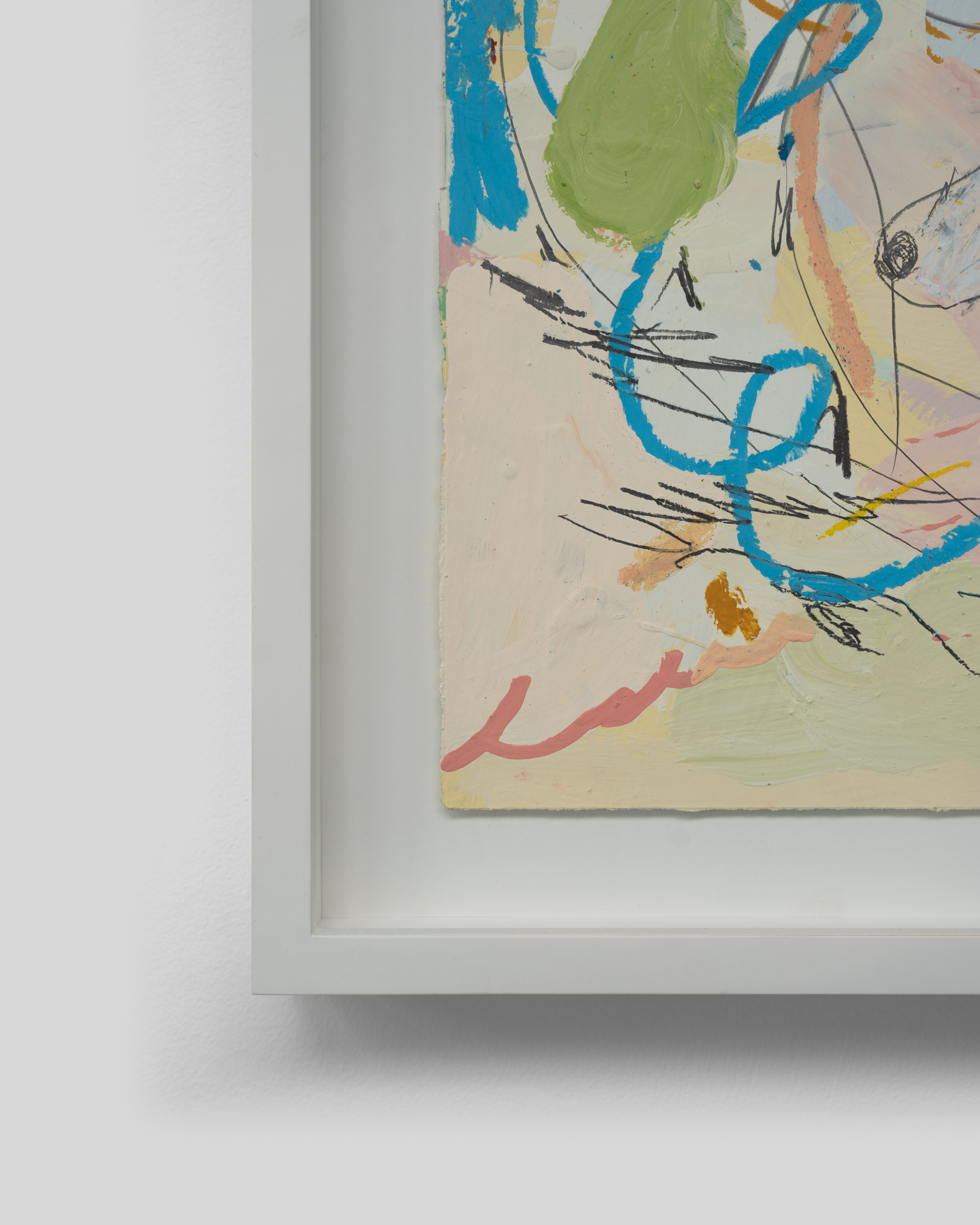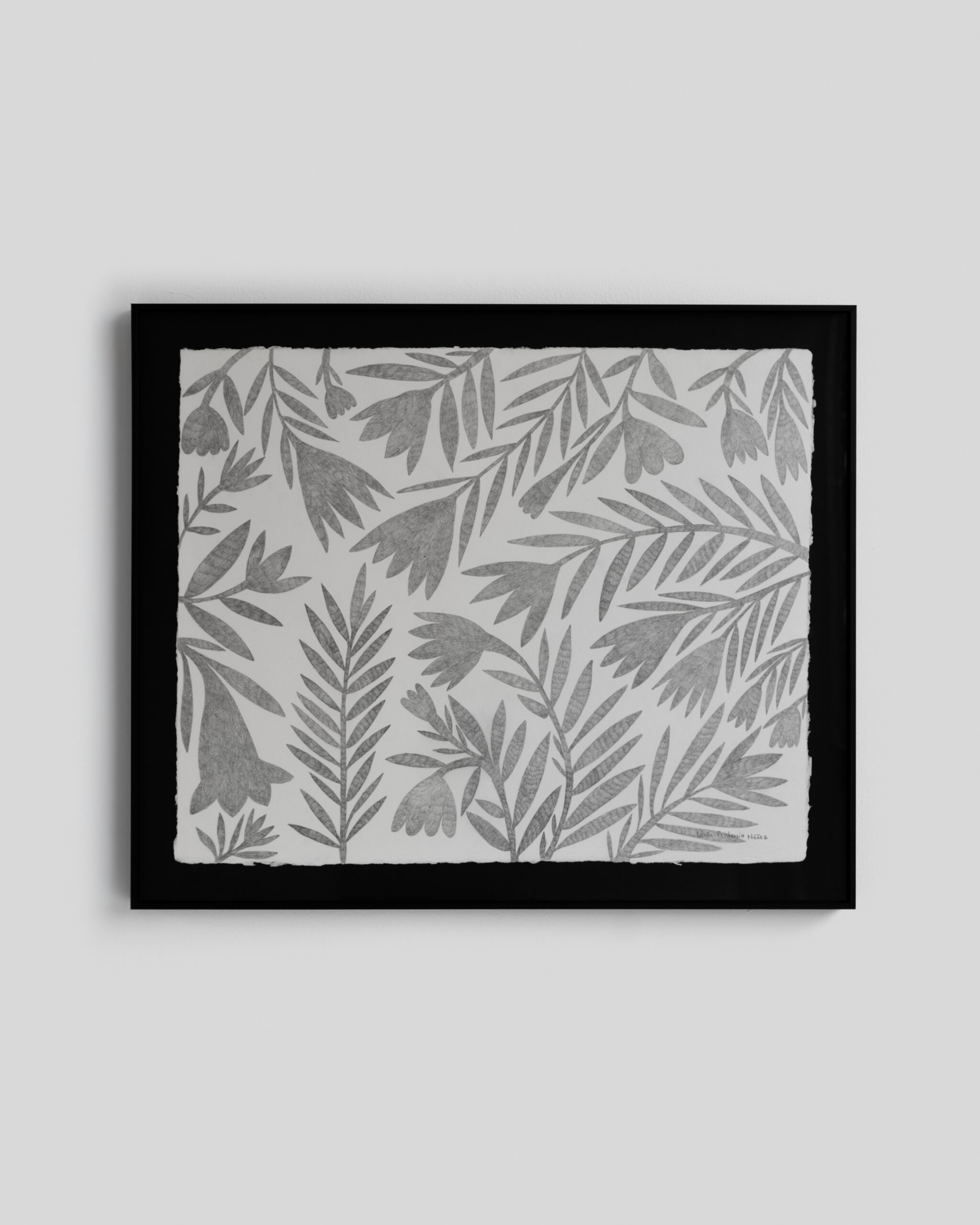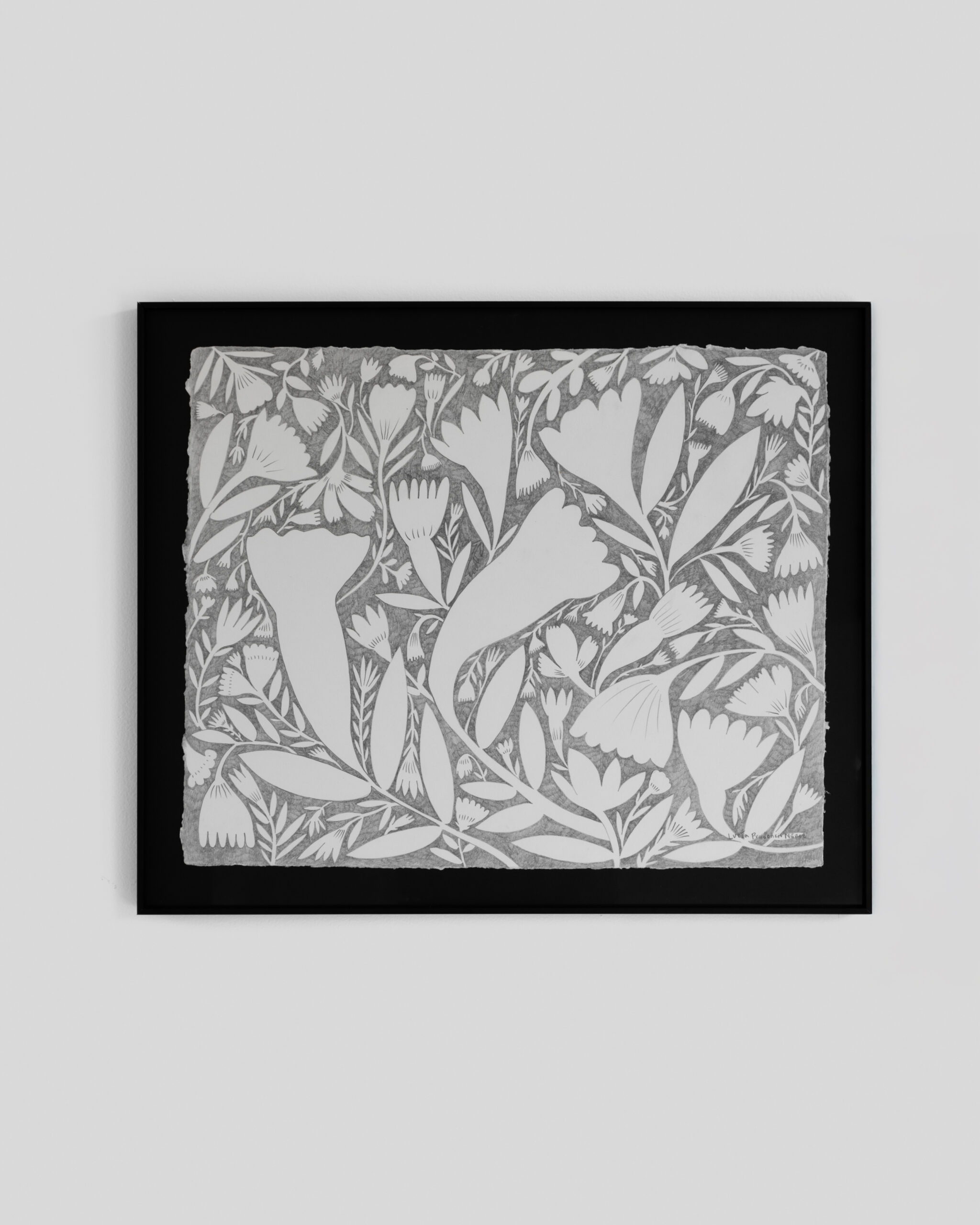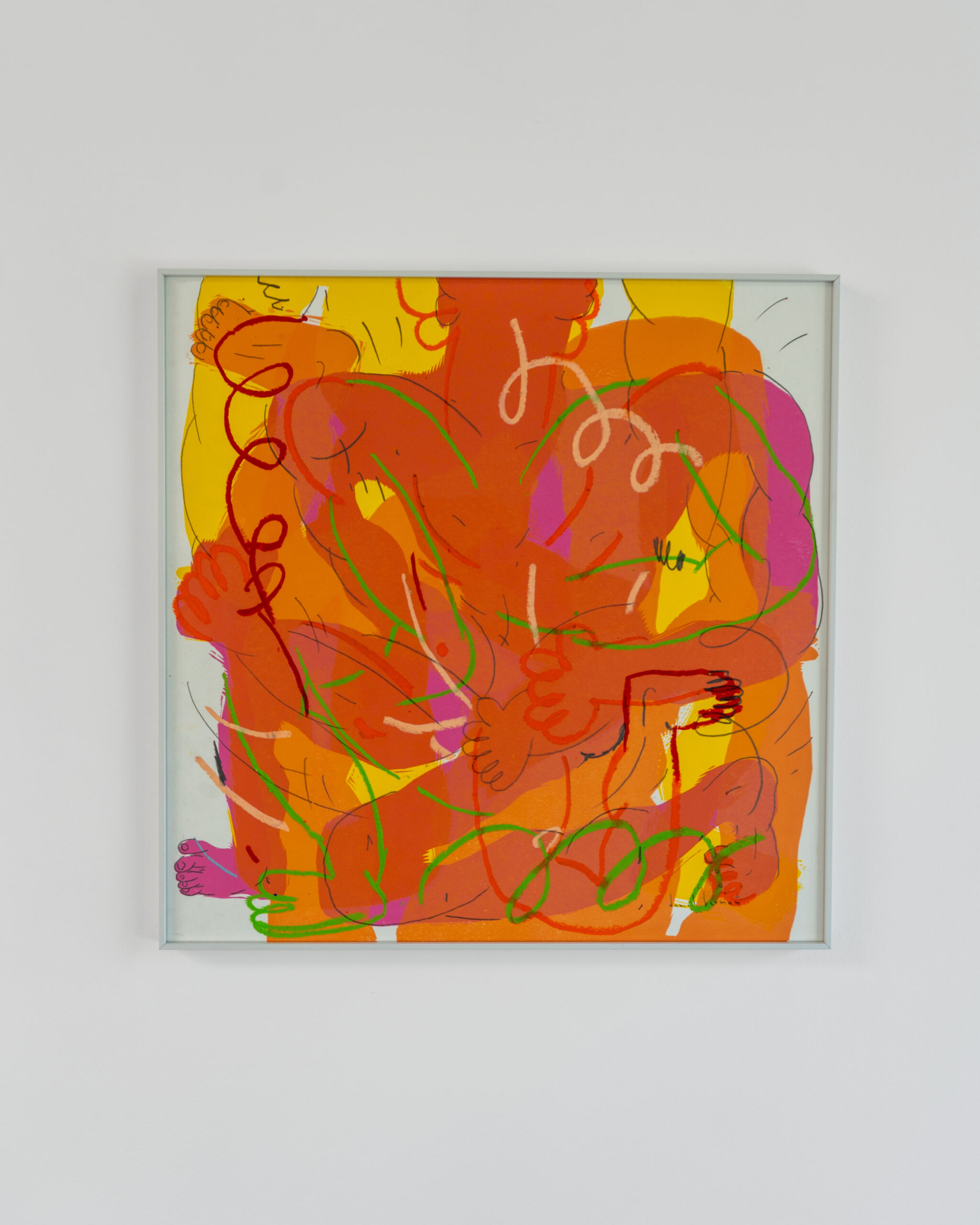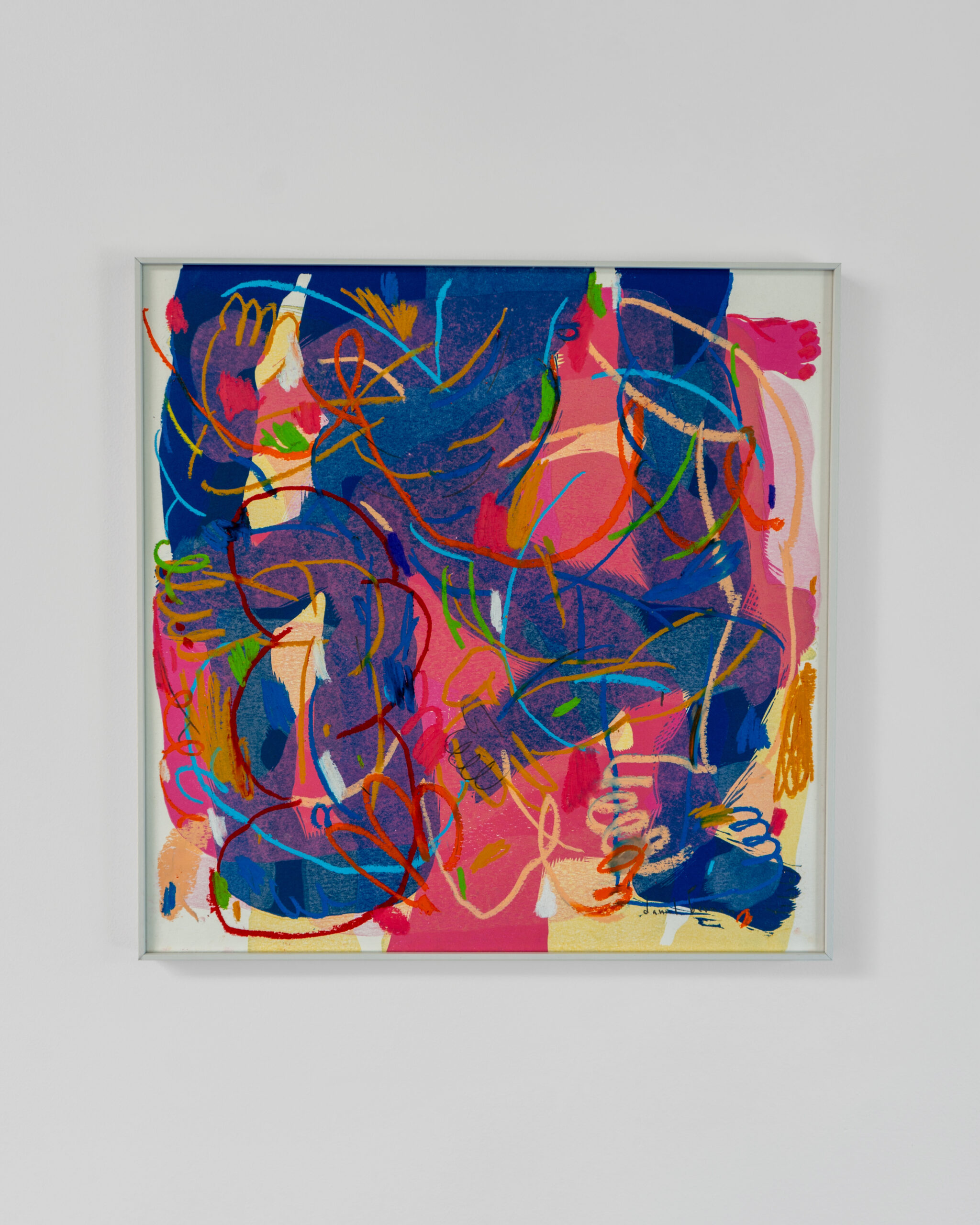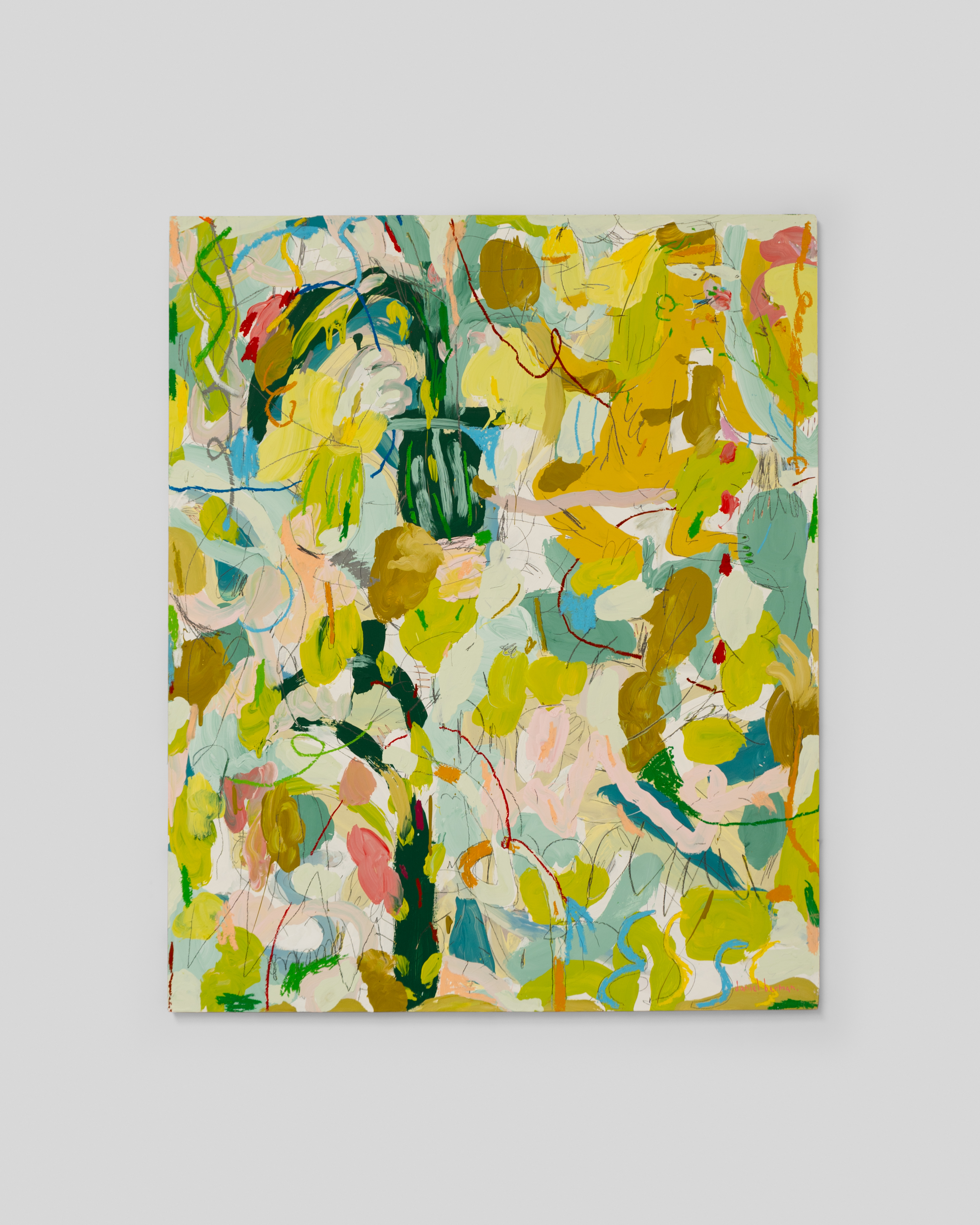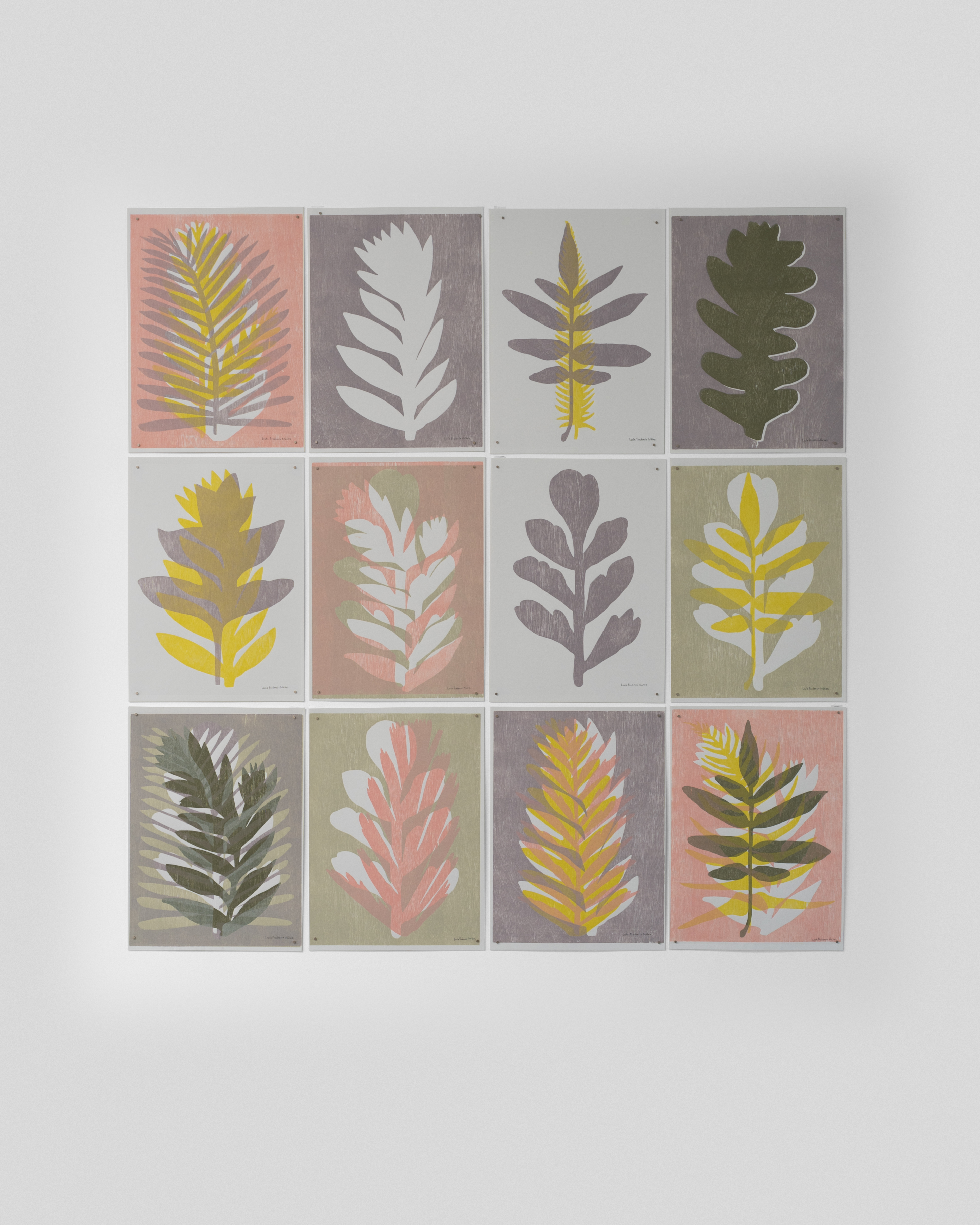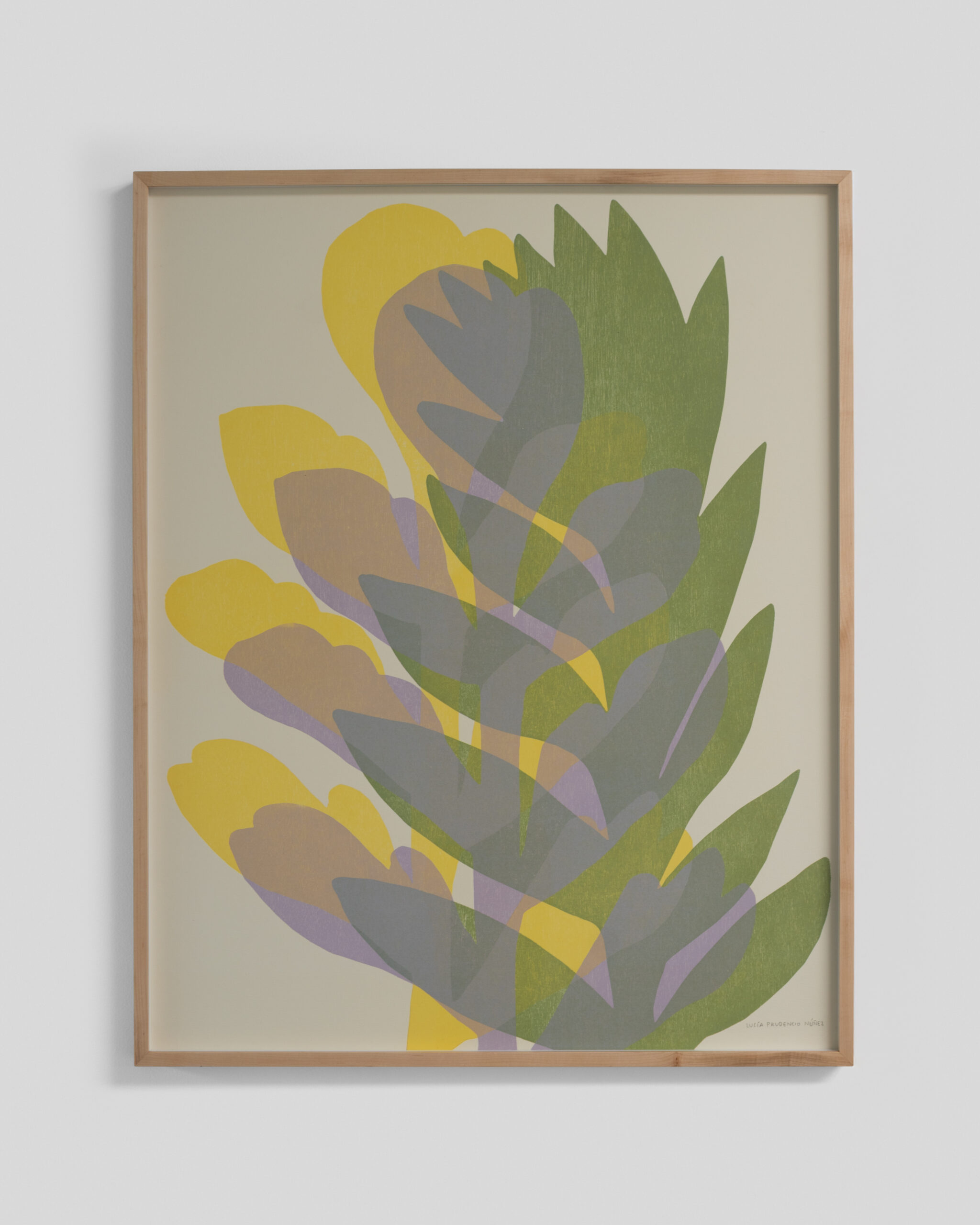LA ORDUÑA is the second exhibition in the .PUNTOYCOMA, program, organized as part of the celebration of the 10th anniversary of Ángulo Cero.
Lucía Prudencio and Daniel Berman, who live and work in Xalapa, Veracruz, have been a fundamental part of our evolution, and for the time we present their recent work together. Xalapa is a very special place for Ángulo Cero, as over the years we have forged strong ties with its growing and diverse artistic community. It is also where Lucía Prudencio and Daniel Berman maintain an ecosystem of graphic and pictorial production in their studio at La Orduña. Both are dedicated to graphics and painting, and although their practice is developed in almost opposite languages and themes, the artists share a creative space.
The woodcuts and large format paintings represent the vastness of the fog forest that Lucía Prudencio inhabits. For the artist, drawing is a primordial tool; she incessantly traces the cloud forest of Xalapa, which she loves and never ceases to amaze her. Lucía is very methodical
in her observation and classi cation of the plant world, similar to a biologist, who saves andclassi es plant samples for the knowledge of
future generations, making a catalog of life. Through her work, Lucía has become not only a patient observer of nature, but also a witness to its gradual destruction. As she draws ferns, she thinks “please let it not end, let it not become extinct” as if through the act of drawing, Lucía could make the plants immortal.
Daniel Berman is an artist who masters the techniques of traditional engraving and painting, and has studied multiple ways of representing the body and reality through drawing. But in an intelligent and playful way, the artist has deconstructed the learned canons, that which dictates what painting and representation should be. Daniel keeps fragments of each universe, so that his works are a superposition of planes, techniques, forms, and textures. He draws withgraphite and pastel on canvas already painted with acrylic, scratches with crayon the woodcuts that he prints with extreme care.
Daniel plays with the human form, he cuts it into segments, makes it into knots, and little by little the body disappears and gestures remain, some lines that give the viewer the idea of the whole, of the missing parts. This is how Daniel’s research is all possible means, playing with them, and waiting for the work itself to dictate the process.



